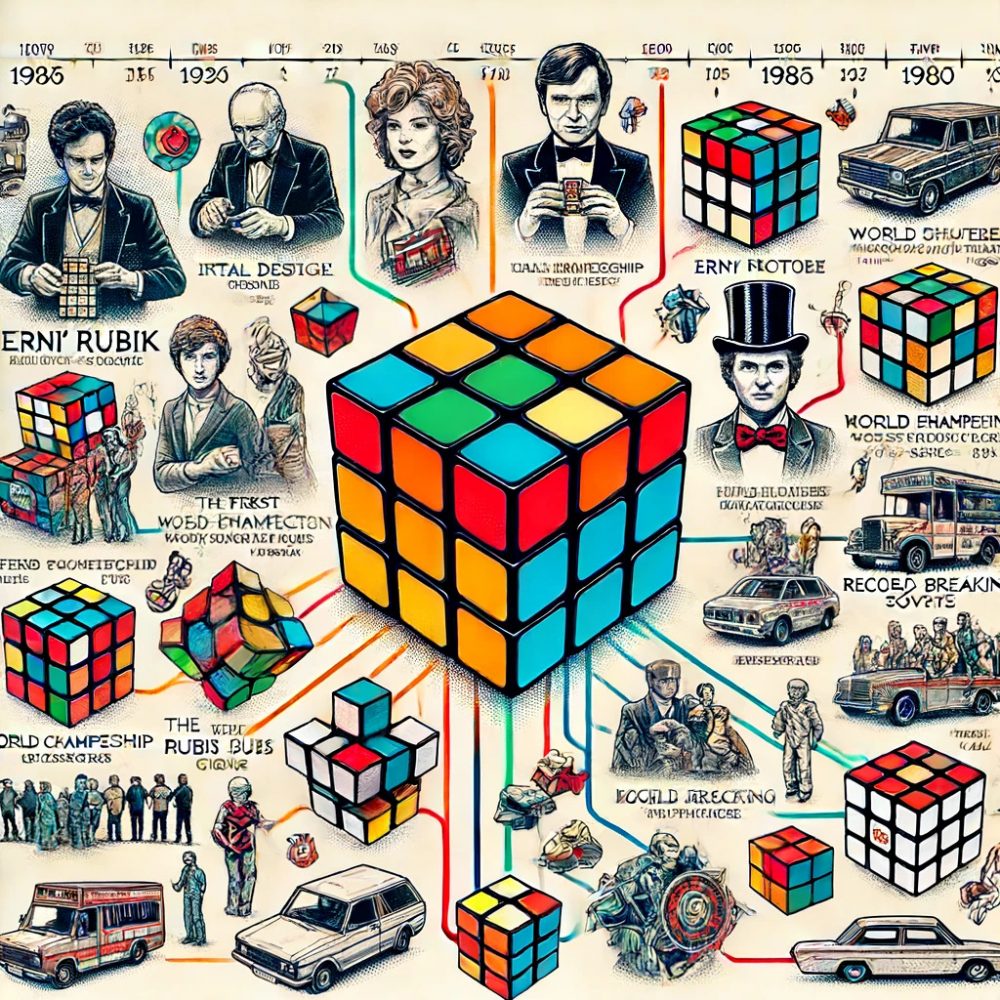
History of Rubik’s Cube: From Toy to Icon
Recommended for Education
Ever held a Rubik’s Cube in your hands? It’s not just a toy, it’s a puzzle, a symbol, a damn cultural phenomenon. A Hungarian professor cooked it up in his head, and it’s been twisting and turning its way into our hearts for 50 years.
This ain’t no kid’s plaything, it’s a mind-bending obsession that’s swept the globe, spawned championships, and even found its way into movies and tech interviews.
We’re diving into the twisted history of the Rubik’s Cube, from its humble beginnings to its enduring legacy. Get ready for a tale of obsession, innovation, and the power of a little colored cube to connect people from all walks of life.
The Cube That Conquered the World
Picture this: a young kid, packed into a stifling train car on the Coromandel Express. He’s clutching a strange, colorful contraption, his fingers twisting and turning, a fevered look in his eyes. This ain’t no ordinary toy; it’s a Rubik’s Cube, a mind-bending puzzle that’s about to take the world by storm.
Back in 1974, Ernő Rubik, a Hungarian professor with a knack for architecture and a restless mind, had a wild idea. He wanted to create a 3D puzzle, something that would challenge his students’ spatial reasoning and keep them on their toes. Little did he know that his humble teaching tool would soon become a global phenomenon.
The Cube, initially dubbed the “Magic Cube,” was like a virus, spreading from Rubik’s classroom to the streets of Budapest, then across Europe, and finally, to the far corners of the globe. By 1980, it had reached India, captivating the minds of young and old alike.
The Allure of the Unsolvable
Our young traveler on the Coromandel Express? He spent his entire journey consumed by the Cube, his fingers dancing across its colorful faces. Sleep? Who needs sleep when you’re unlocking the secrets of a seemingly unsolvable puzzle?
He wasn’t alone. Soon, the streets of India were teeming with Cube enthusiasts. Chess players turned into speedcubers, competing with lightning-fast fingers. The Cube had become a symbol of ingenuity, a test of patience and perseverance.
The Evolution of a Cultural Icon
The Cube’s popularity exploded, spawning countless knockoffs and imitations. But nothing could quite match the original Rubik’s brand. In 1982, the first-ever Rubik’s Cube World Championship was held in Budapest, solidifying the Cube’s place in competitive culture.
Fast forward to the digital age. You’d think a mechanical puzzle would fade into obscurity, right? Wrong. The Rubik’s Cube defied the odds, adapting and thriving in the virtual world. Online communities sprang up, sharing algorithms and strategies, fueling a global obsession.
The Cube evolved too. It wasn’t just about solving the classic 3×3 anymore. New shapes emerged – pyramids, dodecahedrons, even cubes with mind-boggling numbers of pieces. The World Cube Association (WCA) was born, organizing competitions and setting standards for the ever-growing community of cubers.
The Cube’s Enduring Appeal
“A Piece of Art You’re Emotionally Involved With”
Ernő Rubik, the man behind the madness, once said, “I think probably the Cube reminds us we have hands… You are not just thinking, you are doing something. It’s a piece of art you are emotionally involved with…” And he’s right. The Cube isn’t just a puzzle; it’s a tactile, hands-on experience that engages both the mind and the spirit.
More Than Just a Toy: A Symbol of Ingenuity and Community
The Cube’s appeal transcends age and ability. It’s been used as a therapeutic tool, helping individuals with autism develop motor skills and social connections. It’s a symbol of resilience, a testament to the power of the human mind to overcome challenges.
From India to America, from young children to seasoned professionals, the Rubik’s Cube unites people across cultures and generations. It’s a community of problem-solvers, a testament to the human spirit of curiosity and perseverance.
The quest to find “God’s Number” – the minimum number of moves required to solve any Rubik’s Cube configuration – continues to captivate mathematicians and computer scientists. It’s a testament to the enduring mystery and complexity of this seemingly simple puzzle.
The Cube’s Legacy: A Timeless Icon
The Rubik’s Cube is more than just a toy. It’s a cultural icon, a symbol of ingenuity, and a testament to the power of the human mind. It has inspired countless inventions, sparked a global community, and continues to challenge and entertain people of all ages.
Fifty years on, the Rubik’s Cube remains a timeless classic, a testament to the enduring power of a simple idea that captured the world’s imagination.
Watch a video
The Rubik’s Riddle: How Its Creator Solved the Impossible!
Curious Times is a leading newspaper and website for kids. We publish daily global news aligned to your learning levels (also as per NEP 2020): Foundational, Preparatory (Primary), Middle and Senior. So, check out the News tab for this. We bring kids’ favourite Curious Times Weekly newspaper every weekend with top news, feature stories and kids’ contributions.
ME – My Expressions at Curious Times is your place to get your work published, building your quality digital footprint. And it is a good way to share your talent and skills with your friends, family, school, teachers and the world. Thus, as you will step into higher educational institutes your published content will showcase your strength.
Communicate with us: Instagram.
0 (Please login to give a Curious Clap to your friend.)
